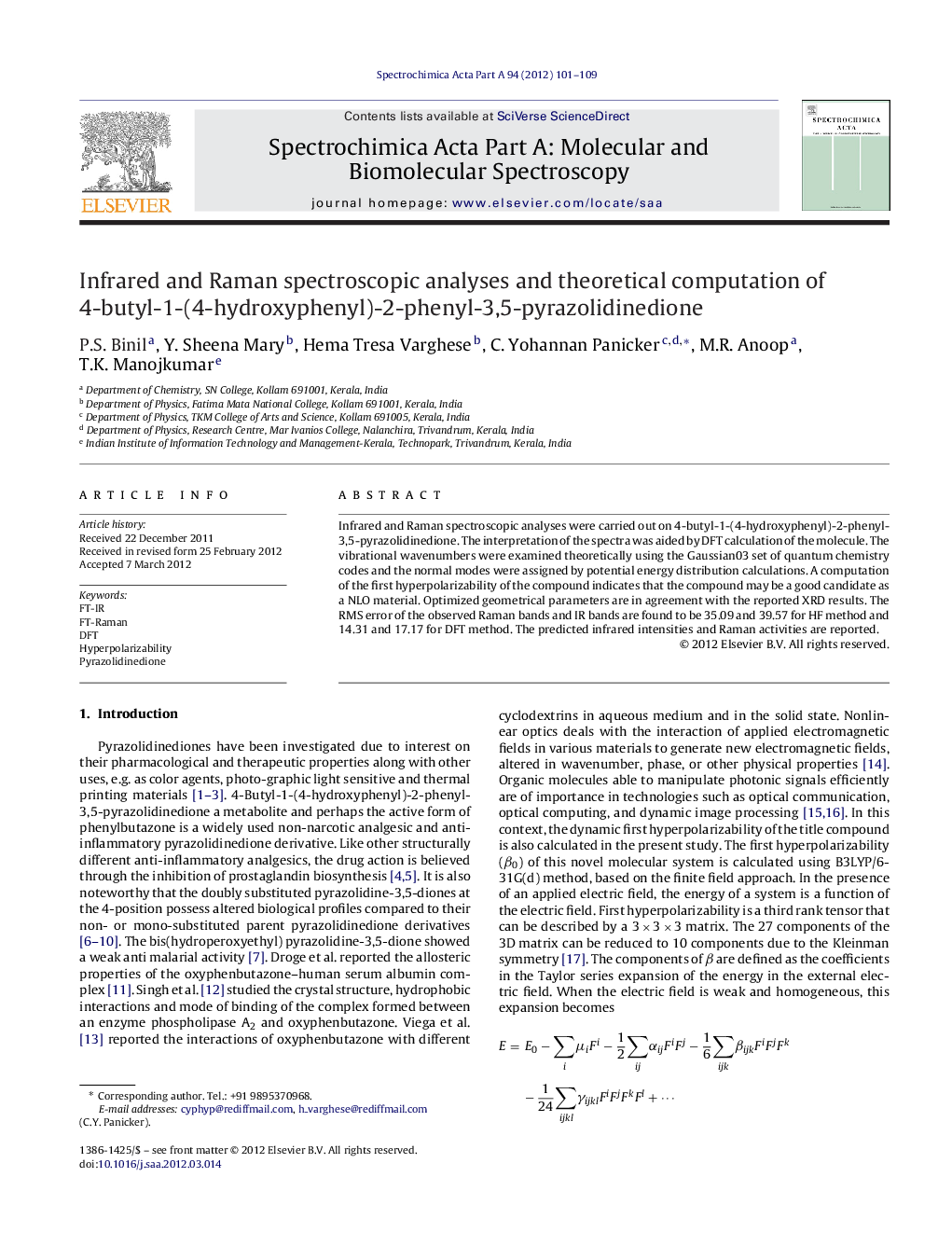| کد مقاله | کد نشریه | سال انتشار | مقاله انگلیسی | نسخه تمام متن |
|---|---|---|---|---|
| 1231409 | 1495274 | 2012 | 9 صفحه PDF | دانلود رایگان |

Infrared and Raman spectroscopic analyses were carried out on 4-butyl-1-(4-hydroxyphenyl)-2-phenyl-3,5-pyrazolidinedione. The interpretation of the spectra was aided by DFT calculation of the molecule. The vibrational wavenumbers were examined theoretically using the Gaussian03 set of quantum chemistry codes and the normal modes were assigned by potential energy distribution calculations. A computation of the first hyperpolarizability of the compound indicates that the compound may be a good candidate as a NLO material. Optimized geometrical parameters are in agreement with the reported XRD results. The RMS error of the observed Raman bands and IR bands are found to be 35.09 and 39.57 for HF method and 14.31 and 17.17 for DFT method. The predicted infrared intensities and Raman activities are reported.
Infrared and Raman spectroscopic analyses were carried out on 4-butyl-1-(4-hydroxyphenyl)-2-phenyl-3,5-pyrazolidinedione. The interpretation of the spectra was aided by DFT calculation of the molecule. The vibrational wavenumbers were examined theoretically using the Gaussian03 set of quantum chemistry codes and the normal modes were assigned by potential energy distribution calculations. A computation of the first hyperpolarizability of the compound indicates that the compound may be a good candidate as a NLO material. Optimized geometrical parameters are in agreement with the reported XRD results.Figure optionsDownload as PowerPoint slideHighlights
► FT-IR and FT-Raman spectra of the title compound were recorded and analyzed.
► The wavenumbers are calculated theoretically using Gaussian03 software.
► Calculated geometrical parameters are in agreement with reported XRD values.
► The wavenumbers are assigned using PED analysis.
Journal: Spectrochimica Acta Part A: Molecular and Biomolecular Spectroscopy - Volume 94, August 2012, Pages 101–109